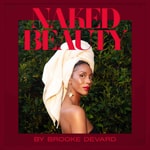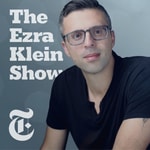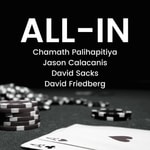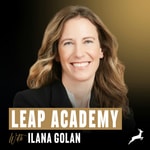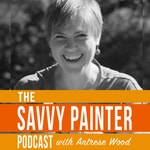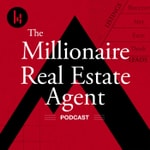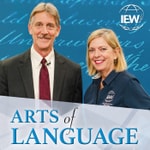Critics at Large | The New Yorker – Détails, épisodes et analyse
Détails du podcast
Informations techniques et générales issues du flux RSS du podcast.
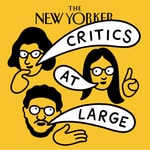
Critics at Large | The New Yorker
The New Yorker
Fréquence : 1 épisode/7j. Total Éps: 90

Critics at Large is a weekly culture podcast from The New Yorker. Every Thursday, the staff writers Vinson Cunningham, Naomi Fry, and Alexandra Schwartz discuss current obsessions, classic texts they’re revisiting with fresh eyes, and trends that are emerging across books, television, film, and more. The show runs the gamut of the arts and pop culture, with lively, surprising conversations about everything from Salman Rushdie to “The Real Housewives.” Through rigorous analysis and behind-the-scenes insights into The New Yorker’s reporting, the magazine’s critics help listeners make sense of our moment—and how we got here.
Classements récents
Dernières positions dans les classements Apple Podcasts et Spotify.
Apple Podcasts
🇨🇦 Canada - societyAndCulture
21/07/2025#94🇨🇦 Canada - societyAndCulture
20/07/2025#100🇬🇧 Grande Bretagne - societyAndCulture
18/07/2025#91🇨🇦 Canada - societyAndCulture
16/07/2025#96🇨🇦 Canada - societyAndCulture
07/04/2025#91🇬🇧 Grande Bretagne - societyAndCulture
07/04/2025#95🇬🇧 Grande Bretagne - societyAndCulture
06/04/2025#98🇺🇸 États-Unis - societyAndCulture
04/04/2025#100🇺🇸 États-Unis - societyAndCulture
01/04/2025#74🇺🇸 États-Unis - societyAndCulture
31/03/2025#65
Spotify
Aucun classement récent disponible
Liens partagés entre épisodes et podcasts
Liens présents dans les descriptions d'épisodes et autres podcasts les utilisant également.
See allQualité et score du flux RSS
Évaluation technique de la qualité et de la structure du flux RSS.
See allScore global : 69%
Historique des publications
Répartition mensuelle des publications d'épisodes au fil des années.
Tarot, Tech, and Our Age of Magical Thinking
jeudi 29 août 2024 • Durée 46:43
Until recently, tarot, astrology, and spiritualism—practices often shorthanded simply as woo-woo—were the stuff of dusty psychic parlors and seventies nostalgia. But today, mysticism has permeated mainstream culture. In the third and final installment of the Critics at Large interview series, Vinson Cunningham talks with Jennifer Wilson, a contributing writer at The New Yorker, about this new age of magical thinking. They discuss how “woo” has seeped into our everyday lives through apps such as Co-Star, and how recent TV shows and novels have embraced supernatural themes. With the rise of cryptocurrency and sports betting, speculation about the future has become a fundamental part of our economy, too. “Maybe people would feel less uncertainty that pushes them to consult with astrology and tarot-card readers if there were more security in the present,” Wilson says. “In so many ways, this is a problem we’ve created.” And a bonus: Vinson gets a tarot reading of his own.
Read, watch, and listen with the critics:
“The Curse” (2023)
@astropoets
“True Detective” (2014-)
“This Is Me . . . Now: A Love Story” (2024)
“The White Lotus” (2021-)
“Long Island Compromise,” by Taffy Brodesser-Akner
“ ‘The Curse’ and the Magical Thinking of the Speculative Economy,” by Jennifer Wilson
“Look Into My Eyes” (2024)
“Speculative Communities: Living with Uncertainty in a Financialized World,” by Aris Komporozos-Athanasiou
New episodes drop every Thursday. Follow Critics at Large wherever you get your podcasts.
The Irresistible Myth of Las Vegas
jeudi 22 août 2024 • Durée 43:23
Cities have always been romanticized, but few of them have embraced—or actively engineered—their reputations as thoroughly as Las Vegas. On the second in a series of Critics at Large interview episodes, Alexandra Schwartz talks with her fellow staff writer Nick Paumgarten about how the desert town first branded itself as an entertainment capital, and how that image has been reified in pop culture ever since. The two consider seminal Vegas texts, from Hunter S. Thompson’s 1971 novel, “Fear and Loathing in Las Vegas,” to the bro comedy “The Hangover,” and Paumgarten reflects on his recent pilgrimage to see Dead & Company, the latest iteration of the Grateful Dead, during the band’s residency at the Sphere. In theory, a Vegas residency should be a career high—but the expectations around them can also leave an artist trapped in amber. It’s a danger that applies to places as much as people. “How do you reinvent yourself when you’ve achieved this cultural-icon status?” Schwartz asks. “In some ways, I wonder if that’s also a question for the city itself.”
Read, watch, and listen with the critics:
“Reckoning with the Dead at the Sphere,” by Nick Paumgarten (The New Yorker)
“Swingers” (1996)
“Double or Quits,” by Dave Hickey (Frieze)
“Learning from Las Vegas,” by Robert Venturi, Steven Izenour, and Denise Scott Brown
“Viva Las Vegas” (1964)
“Leaving Las Vegas” (1995)
“Fear and Loathing in Las Vegas,” by Hunter S. Thompson
“The Hangover” (2009)
“Viva Las Vegas: Elvis Returns to the Stage,” by Ellen Willis (The New Yorker)
“Elvis” (2022)
“Hacks” (2021—)
“Sex and the City” (1998-2004)
“Friends” (1994-2004)
“Seinfeld” (1989-1998)
New episodes drop every Thursday. Follow Critics at Large wherever you get your podcasts.
The Therapy Episode
jeudi 20 juin 2024 • Durée 45:27
In recent years, as our culture has embraced therapy more widely, depictions of the practice have proliferated on screen. On this episode of Critics at Large, Vinson Cunningham, Naomi Fry, and Alexandra Schwartz trace the archetype from the silent, scribbling analysts of Woody Allen’s œuvre and the iconic Dr. Melfi of “The Sopranos” to newer portrayals in shows such as “Shrinking,” on Apple TV+, and Showtime’s “Couples Therapy,” now in its fourth season. The star of “Couples Therapy” is Orna Guralnik, whose sessions with real-life couples show how these tools can lead to breakthroughs—or, in some cases, enable bad behavior. Since the series débuted, mental-health awareness has only grown, and the rise of therapists on social media has put psychoanalytic language and constructs into the hands of a much broader audience. Is the therapy boom making us better? “There’s a way in which jargon or concepts when boiled down can be used to categorize both ourselves and others,” says Schwartz. “Maybe what I’m asking for is a reinvigoration of the idea of therapy—not to close down meaning, but to open up meaning.”
Read, watch, and listen with the critics:
“The Sopranos” (1999-2007)
“Couples Therapy” (2019-)
“The Therapist Remaking Our Love Lives on TV,” by Alexandra Schwartz (The New Yorker)
“The Rise of Therapy-Speak,” by Katy Waldman (The New Yorker)
“Dr. Katz, Professional Therapist” (1995-2002)
“The Critic” (1994-95)
“Annie Hall” (1977)
“The Case Against the Trauma Plot,” by Parul Seghal (The New Yorker)
“Shrinking” (2023-)
“Ted Lasso” (2020-23)
The Cut’s Overanalyzed series
“21 Ways to Break Up with Your Therapist,” by Alyssa Shelasky (The Cut)
New episodes drop every Thursday. Follow Critics at Large wherever you get your podcasts.
Is Travel Broken?
jeudi 13 juin 2024 • Durée 48:29
It’s a confusing time to travel. Tourism is projected to hit record-breaking levels this year, and its toll on the culture and ecosystems of popular vacation spots is increasingly hard to ignore. Social media pushes hoards to places unable to withstand the traffic, while the rise of “last-chance” travel—the rush to see melting glaciers or deteriorating coral reefs before they’re gone forever—has turned the precarity of these destinations into a selling point. On this episode of Critics at Large, Vinson Cunningham, Naomi Fry, and Alexandra Schwartz explore the question of why we travel. They trace the rich history of travel narratives, from the memoirs of Marco Polo and nineteenth-century accounts of the Grand Tour to shows like Anthony Bourdain’s “Parts Unknown” and HBO’s “The White Lotus.” Why are we compelled to pack a bag and set off, given the growing number of reasons not to do so? “One thing that’s really important for me as a traveller is the experience of being foreign,” Schwartz says. “I’m starting to realize that there are places I may never go, and this has actually made other people’s accounts of them, in the deeper sense, more important.”
Read, watch, and listen with the critics:
“The New Tourist,” by Paige McClanahan
The “Lonely Planet” guidebooks
“The Travels of Marco Polo,” by Rustichello da Pisa
“Of Travel,” by Francis Bacon
“The Innocents Abroad,” by Mark Twain
“Self-Reliance,” by Ralph Waldo Emerson
“Travels through France and Italy,” by Tobias Smollett
“Anthony Bourdain: Parts Unknown” (2013-18)
“The White Lotus” (2021—)
“Conan O’Brien Must Go” (2024)
“It Just Got Easier to Visit a Vanishing Glacier. Is That a Good Thing?,” by Paige McClanahan (The New York Times)
“The New Luxury Vacation: Being Dumped in the Middle of Nowhere,” by Ed Caesar (The New Yorker)
New episodes drop every Thursday. Follow Critics at Large wherever you get your podcasts.
The Many Faces of the Hit Man
jeudi 6 juin 2024 • Durée 46:51
“Hit Man,” a new film directed by Richard Linklater, is not, in fact, about a hit man. The movie follows Gary Johnson (Glen Powell), a mild-mannered philosophy professor who assists law enforcement in sting operations by posing as a contract killer—and playing on the expectations stoked by Hollywood. On this episode of Critics at Large, Vinson Cunningham, Naomi Fry, and Alexandra Schwartz discuss the history of the archetype, from the 1942 noir “This Gun for Hire” to Tarantino’s “Pulp Fiction” and the “John Wick” franchise, and explore why audiences have so enthusiastically embraced a figure that, contrary to the media’s depiction, is basically nonexistent in real life. “It’s a fantasy of what would happen if our rage was optimized, much like our sleep and our work day and our workouts,” says Fry. “And if it comes with a side of wearing a suit that looks great—even better.”
Read, watch, and listen with the critics:
“Collateral” (2004)
“Pulp Fiction” (1994)
“No Country for Old Men” (2007)
“Hit Man” (2024)
“Dazed and Confused” (1993)
“Hit Men Are Easy to Find in the Movies. Real Life Is Another Story,” by Jessie McKinley (The New York Times)
“This Gun for Hire” (1942)
“Le Samouraï” (1967)
“The Killer” (2023)
“Aggro Dr1ft” (2024)
“John Wick” (2014)
“Barry” (2018-23)
New episodes drop every Thursday. Follow Critics at Large wherever you get your podcasts.
The Rising Tide of Slowness
jeudi 30 mai 2024 • Durée 47:06
In recent years, in the realms of self-improvement literature, Instagram influencers, and wellness gurus, an idea has taken hold: that in a non-stop world, the act of slowing down offers a path to better living. In this episode of Critics at Large, the staff writers Vinson Cunningham, Naomi Fry, and Alexandra Schwartz trace the rise of “slowness culture”—from Carl Honoré’s 2004 manifesto to pandemic-era trends of mass resignations and so-called quiet quitting. The hosts discuss the work of Jenny Odell, whose books “How to Do Nothing” and “Saving Time” frame reclaiming one’s time as a life-style choice with radical roots and revolutionary political potential. But how much does an individual’s commitment to leisure pay off on the level of the collective? Is too much being laid at the feet of slowness? “For me, it’s about reclaiming an aspect of humanness, just the experience of not having to make the most with everything we have all the time,” Schwartz says. “There can be a degree of self-defeating critique where you say, ‘Oh, well, this is only accessible to the privileged few.’ And I think the better framing is, how can more people access that kind of sitting with humanness?”
Read, watch, and listen with the critics:
“How Millennials Became the Burnout Generation,” by Anne Helen Petersen (BuzzFeed)
“How to Do Nothing: Resisting the Attention Economy,” by Jenny Odell
“Improving Ourselves to Death,” by Alexandra Schwartz (The New Yorker)
“In Praise of Slowness: Challenging the Cult of Speed,” by Carl Honoré
“The Sabbath,” by Abraham Joshua Heschel
“Saving Time: Discovering a Life Beyond Productivity Culture,” by Jenny Odell
“Slow Down: The Degrowth Manifesto,” by Kohei Saito
New episodes drop every Thursday. Follow Critics at Large wherever you get your podcasts.
This episode originally aired on January 11, 2024.
The New Midlife Crisis
jeudi 23 mai 2024 • Durée 45:18
From John Cheever’s 1964 short story “The Swimmer” to Elizabeth Gilbert’s best-selling 2006 memoir, “Eat, Pray, Love,” our culture has long grappled with what it means to enter middle age. On this episode of Critics at Large, Vinson Cunningham, Naomi Fry, and Alexandra Schwartz examine depictions of that tipping point—and of the crises that often come with it. In the mid-twentieth century (and, depending on your reading of Dante and Balzac, long before that), the phenomenon was largely the purview of men, but massive societal shifts, beginning with the women’s rights movement, have yielded a new archetype. The hosts discuss how novels like Miranda July’s “All Fours” and Dana Spiotta’s “Wayward” have updated the genre for the modern age. “I think the crisis of midlife,” Schwartz says, “is just the crisis of life, period. You invent it for yourself.”
Read, watch, and listen with the critics:
“Miranda July Turns the Lights On,” by Alexandra Schwartz (The New Yorker)
“All Fours,” by Miranda July
“Me and You and Everyone We Know” (2005)
“Inferno,” by Dante Alighieri
“Mrs. Dalloway,” by Virginia Woolf
“Cousin Bette,” by Honoré de Balzac
“The Swimmer,” by John Cheever (The New Yorker)
“The Swimmer” (1968)
“The Women’s Room,” by Marilyn French
“Wifey,” by Judy Blume
“This Isn’t What Millennial Middle Age Was Supposed to Look Like,” by Jessica Grose (The New York Times)
“Wayward,” by Dana Spiotta
“Eat, Pray, Love,” by Elizabeth Gilbert
“Eat, Pray, Love” (2010)
New episodes drop every Thursday. Follow Critics at Large wherever you get your podcasts.
Kendrick Lamar, Drake, and the Benefits of Beef
jeudi 16 mai 2024 • Durée 46:16
The rap superstars Drake and Kendrick Lamar have been on a collision course for a decade, trading periodic diss tracks to assert their superiority—but earlier this month the long-simmering beef erupted into a showdown that said as much about the artists as it did about the art. On this episode of Critics at Large, Vinson Cunningham, Naomi Fry, and Alexandra Schwartz examine how the back-and-forth devolved from a litigation of craft into a series of ad-hominem attacks alleging everything from cultural appropriation to pedophilia. They discuss the way rivalries function in the creative world, fuelling new work and compelling audiences to pay closer attention to it than ever before. The hosts also consider other feuds of note, from a nineteenth-century debate over Shakespearean actors that ended in violence to the writer Renata Adler’s blistering takedown of the film critic Pauline Kael in The New York Review of Books. Why do so many of these schisms revolve around fundamental questions of authenticity and belonging? And, once they start to spiral, is there any going back? “Conflict can be productive emotionally and also artistically,” Schwartz says. “But this is not a place that we can permanently reside.”
Read, watch, and listen with the critics:
“DAMN.,” by Kendrick Lamar
“To Pimp a Butterfly,” by Kendrick Lamar
“Control,” by Big Sean featuring Kendrick Lamar and Jay Electronica
“First Person Shooter,” by Drake featuring J. Cole
“Like That,” by Future, Metro Boomin, and Kendrick Lamar
“Push Ups,” by Drake
“Taylor Made Freestyle,” by Drake
“Back to Back,” by Drake
“euphoria,” by Kendrick Lamar
“6:16 in LA,” by Kendrick Lamar
“meet the grahams,” by Kendrick Lamar
“Not Like Us,” by Kendrick Lamar
“THE HEART PART 6,” by Drake
“Stormy Daniels’s American Dream,” by Naomi Fry (The New Yorker)
“The Perils of Pauline,” by Renata Adler (The New York Review of Books)
New episodes drop every Thursday. Follow Critics at Large wherever you get your podcasts.
Our Collective Obsession with True Crime
jeudi 9 mai 2024 • Durée 51:19
Over the past several years, true crime’s hold on the culture has tightened into a vice grip, with new titles flooding podcast charts and streaming platforms on a daily basis. This week on Critics at Large, Vinson Cunningham, Naomi Fry, and Alexandra Schwartz take stock of the phenomenon, first by speaking with fans of the genre to understand its appeal. Then, onstage at the 2024 Cascade PBS Ideas Festival, they continue the discussion with The New Yorker’s Patrick Radden Keefe, whose books “Empire of Pain” and “Say Nothing” are exemplars of the form. The panel considers Keefe’s recent piece, “The Oligarch’s Son,” which illuminates the journalistic challenges of reporting on sordid events—not least the difficulty of managing the emotions and expectations of victims’ families. As its appeal has skyrocketed, true crime has come under greater scrutiny. The most successful entries bypass lurid details and shed light on the society in which these transgressions occur. But “the price you have to pay in sociology, in anthropology, in enriching our understanding of something beyond the crime itself—it’s fairly high,” Keefe says. “You have to remember that this is a real story about real people. They’re alive. They’re out there.”
This episode was recorded on May 4, 2024 at the Cascade PBS Ideas Festival, in Seattle, Washington.
Read, watch, and listen with the critics:
“UK True Crime Podcast”
“My Favorite Murder”
“Empire of Pain,” by Patrick Radden Keefe
“Say Nothing,” by Patrick Radden Keefe
“Paradise Lost,” by John Milton
“A Loaded Gun,” by Patrick Radden Keefe (The New Yorker)
“The Oligarch’s Son,” by Patrick Radden Keefe (The New Yorker)
“Capote” (2005)
“In Cold Blood,” by Truman Capote (The New Yorker)
“The Jinx: The Life and Deaths of Robert Durst” (2015, 2024)
“Helter Skelter: The True Story of the Manson Murders,” by Curt Gentry and Vincent Bugliosi
“Law & Order” (1990–)
“Dahmer—Monster: The Jeffrey Dahmer Story” (2022)
“The People v. O. J. Simpson: American Crime Story” (2016)
“O.J.: Made in America” (2016)
“Lost Girls: An Unsolved American Mystery,” by Robert Kolker
New episodes drop every Thursday. Follow Critics at Large wherever you get your podcasts.
Why the Sports Movie Always Wins
jeudi 2 mai 2024 • Durée 45:49
From “Raging Bull” to “A League of Their Own,” films about athletes have commanded the attention of even the most sports-skeptical viewers. The pleasure of watching the protagonist undergo a test of body and spirit, proving their worth to society and to themselves—often with a training montage thrown in for good measure—is undeniable. Luca Guadagnino’s steamy new tennis film, “Challengers,” applies this formula in a different context, mining familiar themes like rivalry and camaraderie for their erotic potential. On this episode of Critics at Large, the staff writers Vinson Cunningham, Naomi Fry, and Alexandra Schwartz discuss how recent entries like “Challengers” and last year’s Zac Efron-led wrestling drama, “The Iron Claw,” reflect a more contemporary view of masculinity than their predecessors do. The hosts also assemble their “hall of fame” of sports films, including Spike Lee’s “He Got Game,” the nineties classic “Cool Runnings,” and the rom-com “Love & Basketball.” They argue that the genre, at its best, offers auteurs the chance to embrace their instincts. “For our most stylish filmmakers, I would just lay down the gauntlet. If you want to express to us your personal vision, do a sports movie,” Cunningham says. “Because we’ll know what you care about: visually, sensually—we will know.”
Read, watch, and listen with the critics:
“Challengers” (2024)
“The Iron Claw” (2023)
“Rocky IV” (1985)
“Black Swan” (2010)
“A League of Their Own” (1992)
“Cool Runnings” (1993)
“Raging Bull” (1980)
“He Got Game” (1998)
“Love & Basketball” (2000)
“A League of Their Own” (2022—)
New episodes drop every Thursday. Follow Critics at Large wherever you get your podcasts.
